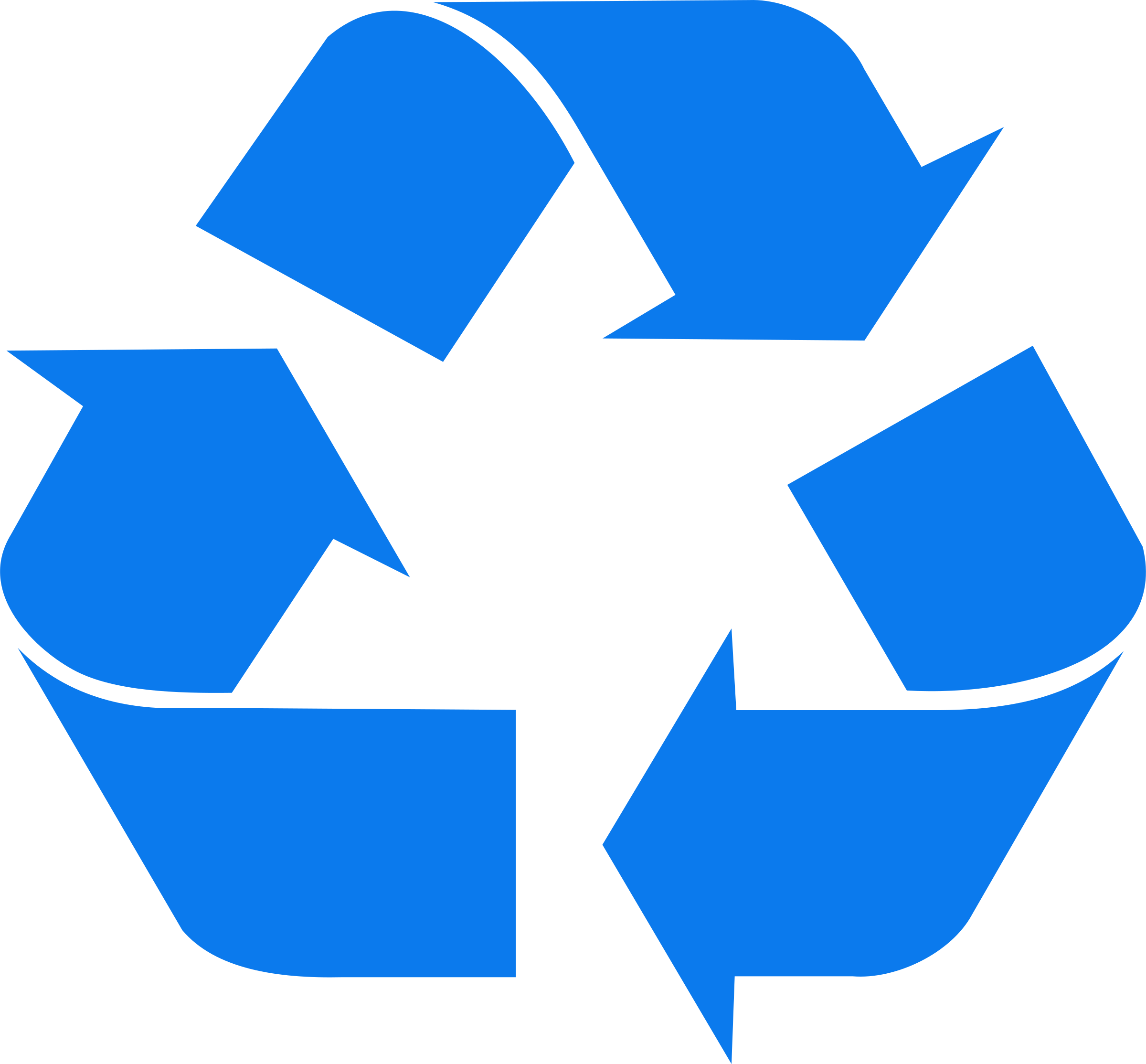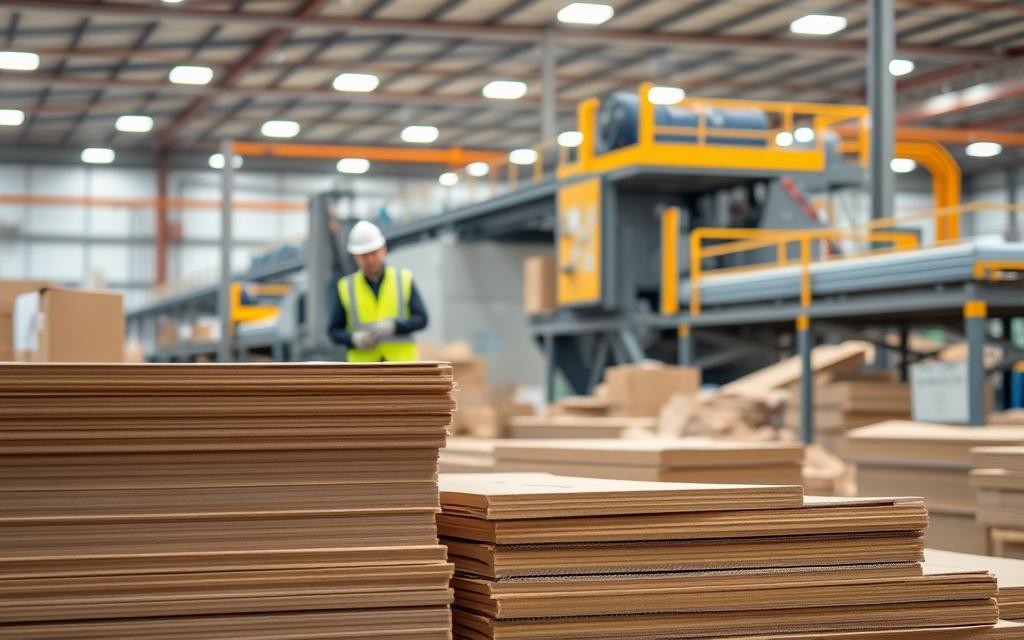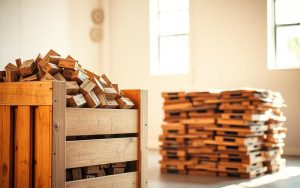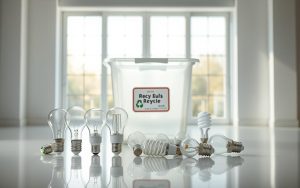Cardboard recycling has become a sustainable and profitable strategy for many businesses and individuals. By transforming waste into revenue, it offers a dual benefit: reducing environmental impact and generating extra income. The growing role of cardboard in modern logistics has made it a valuable resource in today’s economy.
Current market values for recycled cardboard range from $20 to $210 per ton, depending on quality and volume. Businesses that focus on proper sorting and baling can maximize their earnings. Standard “Mill Size Bales,” weighing between 800-1,200 lbs, are often preferred by recycling companies.
Recycling.com, with decades of industry experience since 1963, highlights the importance of infrastructure and quality control. Whether selling loose or baled cardboard, efficient waste management strategies ensure profitability while contributing to a greener planet.
Can You Make Money Recycling Cardboard? An Overview
Transforming cardboard waste into a valuable resource is both eco-friendly and economically rewarding. This process not only reduces landfill dependency but also creates opportunities for businesses and individuals to generate income. With the growing demand for sustainable practices, the recycling industry has seen a significant rise in the value of cardboard materials.
Understanding the Value of Cardboard Recycling
Cardboard is one of the most recyclable materials, capable of being reused 5-7 times before its fibers degrade. The recycling process involves collecting, sorting, and baling cardboard waste, which is then sold to companies that repurpose it into new products. According to the EPA, 20.3 million tons of cardboard are recycled annually in the U.S., showcasing its widespread adoption.
Recyclers often pay twice as much for baled cardboard compared to loose materials. This highlights the importance of proper sorting and baling techniques to maximize financial returns. Additionally, the closed-loop manufacturing process ensures that fibers are reused efficiently, reducing the need for virgin materials.
Environmental and Financial Benefits
The environmental benefits of recycling cardboard are substantial. For every ton recycled, 17 trees are saved, and 7,000 gallons of water are conserved. Energy savings are also significant, with a 46% reduction compared to virgin production. These statistics underscore the importance of integrating recycling services into waste management strategies.
Financially, recycling cardboard offers dual advantages. Businesses can reduce waste management fees while earning direct income from selling materials. Municipal rebate programs and direct sales to recycling companies provide flexible revenue models. As e-commerce continues to grow, the demand for cardboard materials is expected to rise, further driving market value.
“Recycling one ton of cardboard saves 17 trees and 7,000 gallons of water, making it a cornerstone of sustainable waste management.”
| Metric | Value |
|---|---|
| Cardboard Recycled Annually (U.S.) | 20.3 million tons |
| Energy Savings per Ton Recycled | 46% |
| Water Saved per Ton Recycled | 7,000 gallons |
By leveraging the recycling process, businesses and individuals can contribute to a greener planet while unlocking financial opportunities. The combination of environmental and financial benefits makes cardboard recycling a compelling choice for sustainable waste management.
Methods to Start Recycling Cardboard for Profit
Starting a cardboard recycling venture can open doors to both environmental and financial rewards. With the right approach, businesses and individuals can turn waste into a valuable resource. This section explores practical steps to start selling cardboard and maximize earnings.
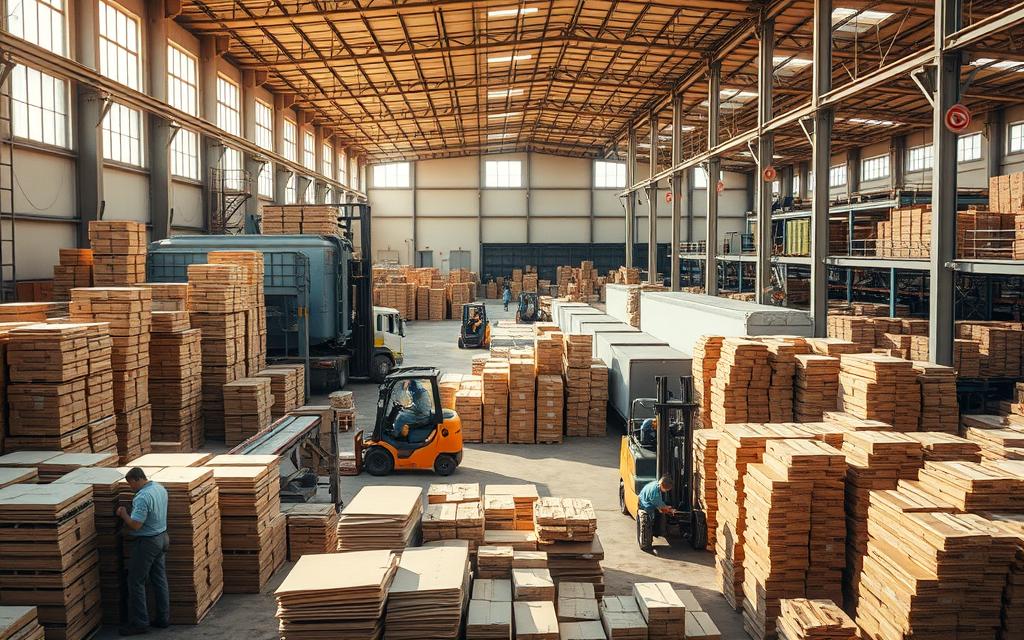
Selling Loose Cardboard vs. Baled Cardboard
One of the first decisions involves choosing between selling loose or baled materials. Loose cardboard requires minimal investment but has higher transport costs—up to 40% more than baled options. For businesses generating 20 loose cubic yards weekly, investing in a baler becomes cost-effective.
Here’s a quick comparison:
- Loose Cardboard: No upfront costs but lower profit margins due to transport expenses.
- Baled Cardboard: Requires a $5,000-$20,000 baler investment but offers higher returns and reduced transport fees.
Understanding volume thresholds and break-even points is crucial for making informed decisions.
Finding Local Recycling Companies
Partnering with reliable recycling companies is essential for success. Start by researching local options and evaluating their certifications, pricing transparency, and pickup models. Companies like Integrity Recycling & Waste Solutions offer flexible collection services tailored to business needs.
Use this checklist when vetting recyclers:
- Check for industry certifications and compliance with local regulations.
- Compare pricing models, including density-based rates (lbs/cubic yard).
- Inquire about contamination penalties, such as food residue rules.
Regional price variations, ranging from $20 to $210 per ton, highlight the importance of negotiating favorable terms. Platforms like Craigslist and Recycling.com can also connect sellers with buyers in their area.
For more insights on maximizing earnings, explore this comprehensive guide on cardboard waste management.
Essential Equipment for Cardboard Recycling
Efficient cardboard recycling requires the right tools and equipment to maximize returns. Proper handling and storage solutions ensure that materials remain in optimal condition, enhancing their market value. Investing in the right equipment can streamline operations and reduce long-term costs.
Investing in a Cardboard Baler
A cardboard baler is a critical piece of equipment for businesses handling large volumes. Balers compress materials into compact bales, reducing storage space and transportation costs. Standard bales measure 60″x30″x42″ and weigh between 800-1,200 lbs, making them easier to handle and sell.
There are two main types of balers: vertical and horizontal. Vertical balers are ideal for smaller operations, while horizontal balers suit larger businesses. Automatic balers offer greater efficiency but come at a higher cost. For mid-sized businesses, the ROI on a baler typically ranges from 6 to 18 months.
Maintenance costs for balers average $500-$2,000 annually. Proper training and OSHA compliance are essential to ensure safety and longevity. Ancillary equipment like forklifts or pallet jacks is often required to move heavy bales.
Storage and Transportation Solutions
Effective storage solutions are vital for preserving the quality of cardboard bales. Climate-controlled environments prevent moisture damage, ensuring materials remain market-ready. Each pallet can hold up to four bales, optimizing space utilization.
Transportation logistics also play a key role. Compact bales reduce shipping costs, making them more attractive to recycling companies. FleetGenius Compactor Solutions offers turnkey systems for businesses looking to streamline their operations.
Here’s a quick comparison of storage and transportation options:
| Option | Benefits | Considerations |
|---|---|---|
| Climate-Controlled Storage | Preserves material quality | Higher initial cost |
| Standard Storage | Cost-effective | Risk of moisture damage |
| Compact Bales | Reduces shipping costs | Requires baler investment |
By investing in the right equipment and solutions, businesses can enhance their recycling efficiency and profitability. A well-organized operation not only saves costs but also contributes to sustainable waste management practices.
Maximizing Earnings from Cardboard Recycling
To boost earnings from cardboard, understanding market dynamics and pricing strategies is essential. By focusing on quality, seasonal trends, and efficient processing, businesses can significantly increase their per-ton value. This section explores actionable tips to optimize returns.
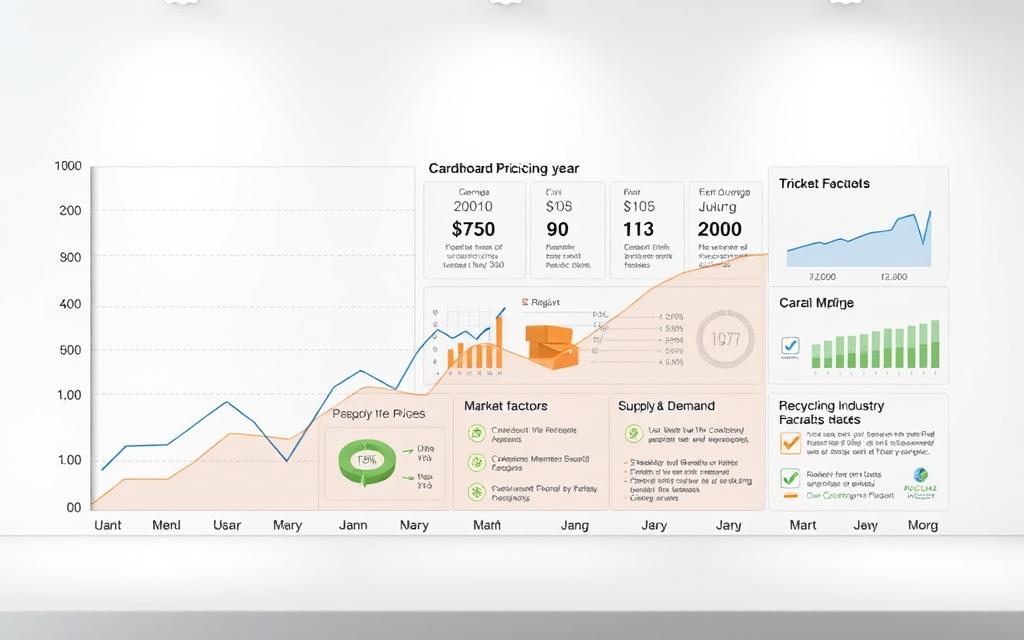
Understanding Cardboard Pricing and Market Trends
Cardboard pricing is influenced by the OCC (Old Corrugated Containers) grading system. Grades #11-13 represent different quality tiers, with #11 being the highest. Prices vary based on factors like contamination levels and regional demand.
Seasonal fluctuations also play a role. For example, Q4 often sees a peak in price due to increased holiday shipping. Tracking commodity indexes on platforms like RecyclingMarkets.net helps sellers stay informed.
“The OCC grading system ensures that sellers are compensated fairly based on the quality of their materials.”
| OCC Grade | Quality Description | Price Range (per ton) |
|---|---|---|
| #11 | Clean, unbleached, and free of contaminants | $150-$210 |
| #12 | Minimal contamination, some printing allowed | $100-$150 |
| #13 | Mixed grades, higher contamination | $50-$100 |
Tips for Selling Cardboard to Recycling Centers
To maximize earnings, reduce contamination by breaking down boxes without using knives. This preserves fiber quality and ensures higher price offers. Bale weight optimization is another key strategy—aim for 800-1,200 lbs per bale to meet industry standards.
Negotiating contracts with recycling centers can also yield better terms. Consider value-added services like sorting and pre-processing to enhance material appeal. Here’s a checklist for success:
- Ensure materials are clean and dry.
- Use proper baling techniques to meet weight requirements.
- Research local recycling centers for competitive rates.
By implementing these strategies, businesses can turn cardboard waste into a profitable resource while contributing to sustainability.
Conclusion: Turning Cardboard Waste into Green Profit
The circular economy is driving innovation in waste management strategies. By focusing on volume, quality, and market timing, businesses can maximize their returns. Sustainability reporting offers additional benefits, enhancing brand reputation and compliance.
The industry is projected to grow at a 4.3% CAGR through 2030, fueled by demand for recycled packaging. Emerging technologies like AI sorting systems and blockchain tracking are revolutionizing efficiency. Starting small and scaling with profits ensures a phased, risk-free approach.
Certifications from SWANA and ISRI validate your commitment to best practices. Tools like waste audit templates and ROI calculators simplify implementation. Partnering with companies like FleetGenius provides access to advanced solutions and equipment.
By adopting these strategies, businesses not only generate revenue but also contribute to a greener environment. A retail chain recently achieved zero-waste status, showcasing the potential of sustainable waste management. Start your journey today and turn waste into profit.
